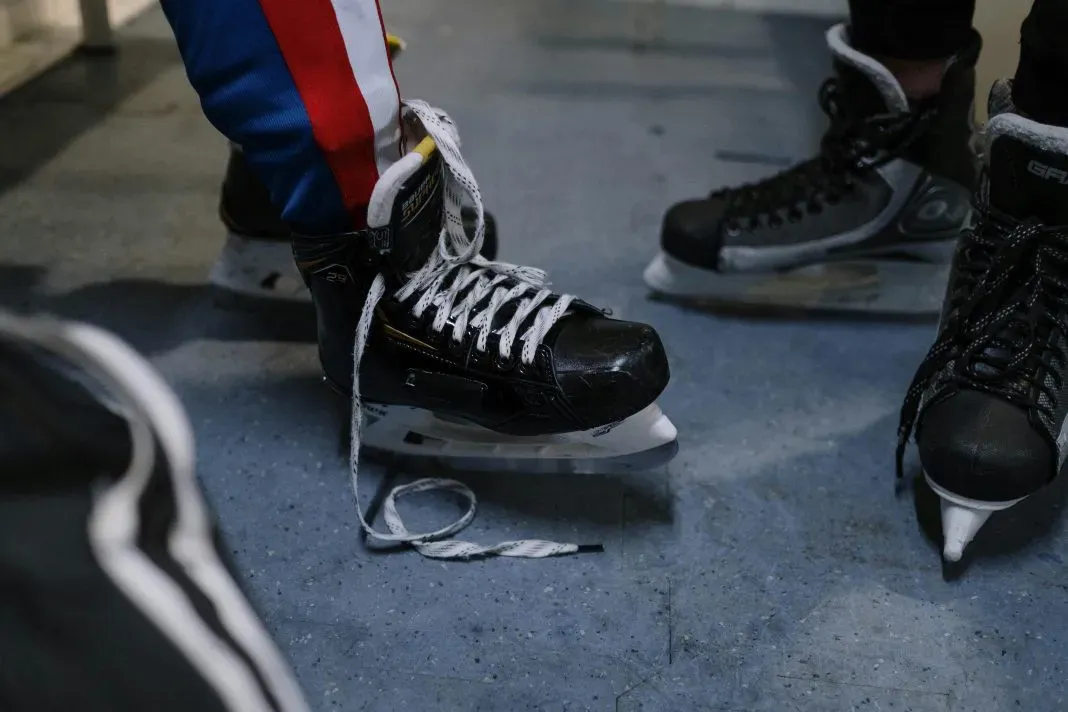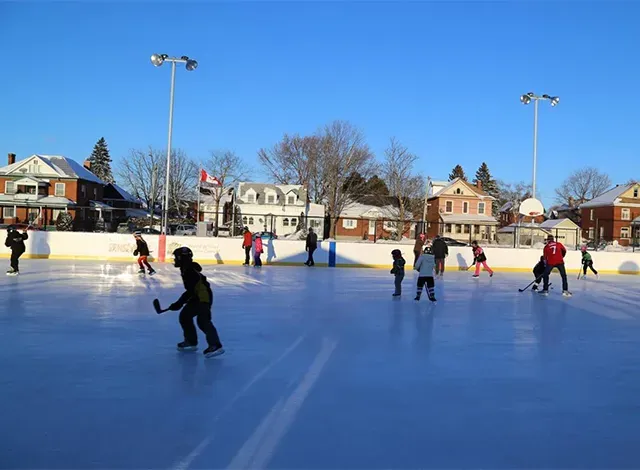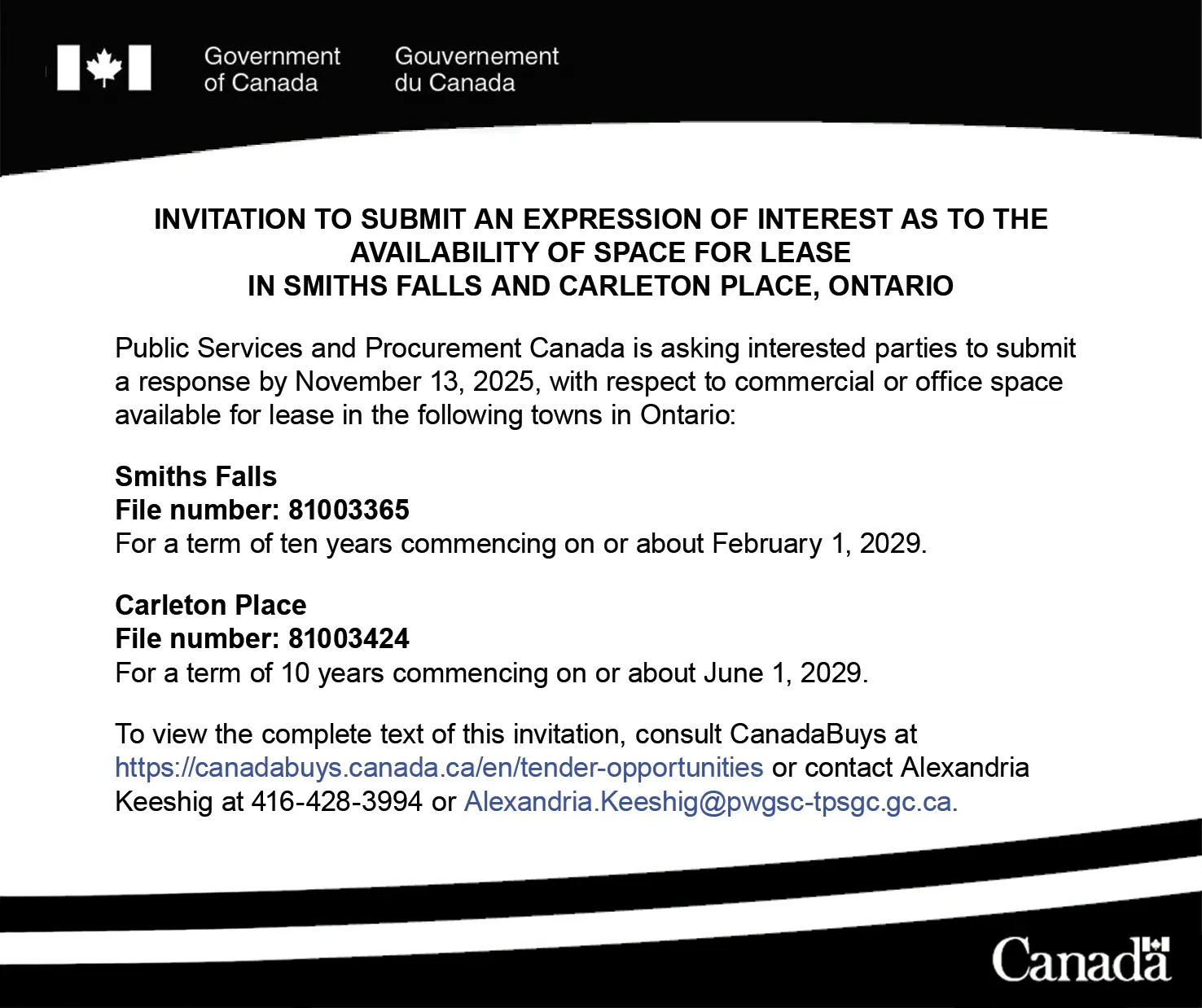Smiths Falls men’s hockey league struggles to keep its longtime Wednesday night slot
SMITHS FALLS — For more than half a century, early Wednesday evenings were for the Smiths Falls men’s hockey league. Lifelong friends squared off, local pubs saw a mid-week bump, and generations of players carried on a community tradition.
It was never competitive; just skate for fun and exercise, plenty of laughs, and no referees.
But it now looks like this tradition has run its course, and members are frustrated and angry about it.
“This is not just hockey, it is community,” said organizer Stephen McKenney Jr. on Sept. 18 over a beverage at a local Tim Hortons. His father also plays in the Smiths Falls men’s hockey league. “I have been able to play with my dad in this league, and that means something. I am angry. I have lost hope of ever playing here with my own son. That is what is really frustrating.”
The town reassigned the Smiths Falls men’s hockey league to a 10:15 p.m. slot from its earlier start this season under an updated ice allocation policy. Players say the later time, along with weekend and afternoon alternatives offered, simply does not work.
Before COVID, the group skated at 7:30 p.m. in the Memorial Centre. When play resumed in 2021, the town moved them to the Youth Arena at 8:20 p.m., saying it would be for one year. They remained there until this year, when the slot was reassigned to 10:15 p.m.
McKenney said he feels the long history of the Smiths Falls men’s hockey league should have carried more weight. “These slots should be grandfathered. New groups should pick from what is available. Instead, we have been shoved aside.”
The Smiths Falls men’s hockey league’s history is also tied to community contributions. Gerry Lowe, a well-loved community builder in Smiths Falls, was part of this league himself. He is remembered for his humour, generosity, and decades of dedication to local sports and youth. Lowe helped secure and sustain the league in its early years, and he invested time and money to ensure the ice was available for the players. Many credit him with planting the roots that kept the league going for generations.
Beyond securing ice time, Lowe left a lasting legacy on recreation in town. A decade ago, a $100,000 partnership between a community group in his name and the Ottawa Senators brought the Gerry Lowe Community Sens Rink to life outside the Memorial Centre. He was also known for quietly helping families cover registration fees so kids could play sports or join other activities.
The group also donated $10,000 to the town to have Lowe’s name placed on a dressing room as a memorial tribute. The players continue to pay about $6,000 annually for their ice time, or roughly $225 per player.
Each Wednesday, after the final buzzer, groups of five or six players from the Smiths Falls men’s hockey league would rotate through three or four local pubs, spending $200 to $300 a night. For businesses, especially in the middle of a quiet winter week, that tradition brought a welcome increase in sales, organizers said.
New policy shifts priorities for Smiths Falls men’s hockey league
Stephanie Clark, director of community services, came to Smiths Falls two years ago and soon after began reviewing the town’s policies. She says the change comes down to numbers and fairness.
“When I arrived, there was an allocation policy in place, and while I cannot speak to its enforcement before the 2023-24 season, the policy itself was pretty standard for the industry,” Clark said. “In 2023, I commenced a comprehensive review and update of the policy to clarify how we handle competing requests.”
She said the current policy formalizes and expands previous practices, offering clearer definitions of group classifications. “Ice time allocations are challenging to balance, and we do the best we can to create a choreography that works for all users, our operations team, our facility and our community,” Clark said. “We also need to ensure that there remains space for the public, time for operations and maintenance, and a schedule that allows us to maximize revenues so that we are able to keep operating losses at a minimum.”
Ranking the ice
“The policy delineates a ranking for allocation of ice times,” Clark said. “Starting from internal programming such as public skates, to youth and minor sports, to adult recreation. When there are similar groups competing for the same time, things like the number of users and duration of time are then taken into consideration.”
She said the policy is circulated to all major users each spring with the request forms.
How long one league has been in the same slot is not part of the ice allotment.
“Ice time is allocated annually in response to requests. No group is guaranteed the same slot from year to year,” Clark said. “Longevity of participation is not considered, as this may create inequities in favour of some groups over others. Our responsibility is to strive for equitable access for all groups within the community.”
Clark said they have an increased demand for women’s hockey. They also have sensory-friendly skate times and shinny to consider. Many of these programs did not exist in previous decades, she noted.
A matter of numbers
Clark said no user group has a proprietary claim to ice times. “All groups are asked for their preferred options, as well as alternative days and times,” she said. “Groups that landed higher on the allocation priority requested the same timeslot as both their preferred choice and their alternative. In this case, their group was given less weight as the competing group based on user numbers. The men’s group’s organizer verbally advised that the group had 22, maybe 24 guys, while the group that was awarded the ice time had eight teams, totalling more than 96 players.”
Clark said staff did try to find other options for the Smiths Falls men’s hockey league. “The organizer was verbally offered the opportunity to explore weekend early evening times, which was declined. To this end, they were offered three different times in writing,” she said.
“Unfortunately, we did not have anything earlier than a 10 p.m. start time during the weekdays. We recently had some time that was returned to us on Fridays in the afternoon, which was then offered to them. However, we have not heard back on this yet.”
Some players have also raised concerns about the smaller dressing rooms in the Youth Arena. Clark acknowledged the size but said the facility was designed that way.
“While we realize that the dressing rooms are smaller in the Youth Arena, they were built to spec at the time and were designed for all users, not just youth,” she said. “Though they are not nearly as spacious or comfortable for adults, they do suit the purpose of creating a private space for users to change into and out of their gear.”
She said that in some cases, adult teams have been allowed to use additional rooms or spaces in the other rink, but this is not always possible and can affect staffing and cleaning schedules.
Smiths Falls men’s hockey league weighs fairness versus tradition
“It is evident by their response that this outcome is not the one that their group preferred,” Clark said. “However, we feel that it reflects our obligation to balance significant competition for ice time in a way that is fair, transparent and equitable. I am disappointed that we have not been able to satisfy them this season; however, we remain hopeful that they will yet find an opportunity to play in our facility.”
For McKenney and members of the Smiths Falls men’s hockey league, that explanation does little to soften the blow. “We have been here for decades. This is a tradition that matters,” he said. “It feels like the end of an era, and it did not have to be this way.”
When asked about the Friday afternoon slot, only seven players replied and none could commit to the full season.
Stay up to date—check out the latest Smiths Falls news.
Related Resources: Recreation and Sporting Facilities.






